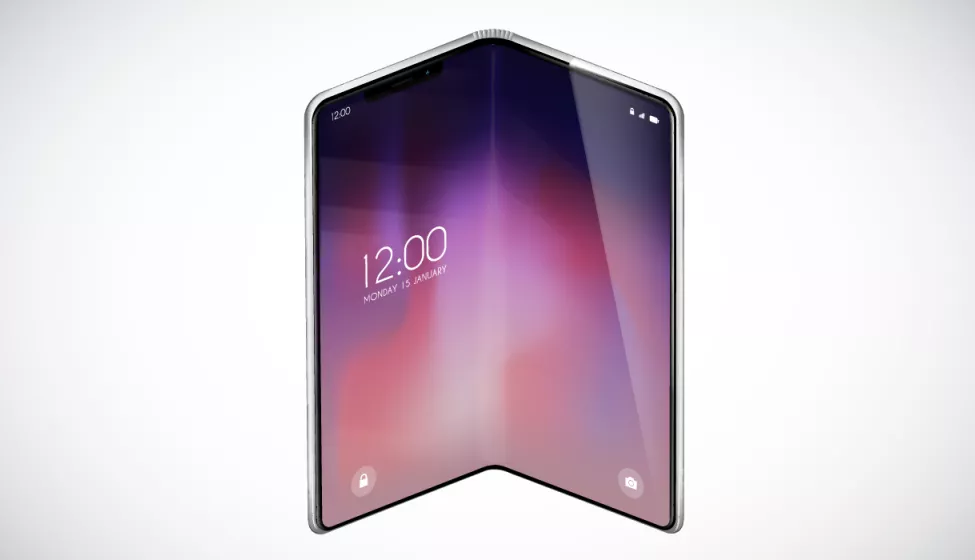May 21, 2020
The total market for organic light-emitting diode (OLED) displays is expected to reach $35 billion USD in 2020 and exceed $60 billion by 2030. Flexible OLED displays are printed on thin, lightweight plastic substrates that can be bent and folded in ways not imaginable with traditional liquid crystal displays (LCDs). While OLED displays open up exciting design possibilities in the mobile phone and wearable device industries, the key factors that contribute to their flexibility also introduce a new set of potential failure modes in the field. Product designers can optimize product reliability and contribute to a positive user experience by expanding the manner in which they model, analyze, and characterize failures in new OLED displays.
Why OLED Characterization Is Different
Traditional LCDs are built around rigid pieces of glass that protect the functional electronic and optical layers of the display from mechanical stress. Single dynamic loads, such as those experienced in drops, tend to break the glass rather than damaging the various thin-film layers (e.g., polarizer, encapsulant, thin-film transistors). During the design and modeling phase of development, the mechanical behavior of these layers is usually approximated or simplified, not only because they rarely have a dominant role in display failure but also because of the complexity of measuring even their few most important mechanical properties. Reasonably predictive computer models for LCD displays can be created with knowledge of relatively few material and failure parameters, such as the stiffness and thermal properties of the thickest display layers and the strength of the glass and other structural layers.
In contrast, all layers of a flexible OLED display are mechanically active and subjected to repeated loads, even the micropatterned thin films. To generate predictive models for OLED displays, product developers must consider a new set of potential failure modes (e.g., wear, fatigue, delamination) that were not as critical for LCDs. Incorporating these failure modes into finite element models of the display requires measuring a new set of parameters beyond those needed for LCD design. These include both the failure stress/strain and fatigue life of each layer under different loading modes, as well as the interfacial properties between neighboring layers.
Testing all the layers in isolation is insufficient; rather, designers should seek to understand how the layers mechanically interact once assembled in a display stack. For example, the adhesion strength of a thin ceramic to an adjacent polymer material could be influenced by the ductility of a nearby metal layer not even in direct contact with that particular interface.
Reasonably predictive models for LCDs can be created with the knowledge of a few dozen material parameters of common structural materials, such as silicate glass and adhesives. Many of these can often be estimated from handbooks or publicly available databases. In contrast, many of the thin films' key mechanical properties have never been fully characterized. A knowledge of ten times more material/mechanical properties may be required to inform a similarly predictive multiscale finite element model of a flexible OLED display.
Fresh Opportunities to Evolve the Product Design Process
Although OLED displays are fundamentally different from their rigid counterparts, they do share many similar subcomponents with LCDs. As such, there are advantages to a traditional, iterative design approach that makes incremental changes to proven LCD designs when creating new OLED designs. However, differences in the way mechanical loads develop in OLEDs require radical departures from these older paradigms that may not be effectively captured by an iterative approach.
As product designers make quantum leaps between product versions, they face exciting opportunities to predict the behavior of new OLED displays in different ways. Complex computer models and fresh approaches to product experimentation can help manufacturers capture important design considerations and optimize both the user experience and long-term reliability of their products in the field.
How Exponent Can Help
Exponent's multidisciplinary team of engineers and scientists are experts in mechanical testing, finite element modeling, material characterization, thin-film engineering, electrical engineering, and root-cause analysis. We can partner with manufacturers of consumer electronics to develop computer models and design and execute experiments that help optimize the reliability of future OLED displays. Our team includes many recent Ph.D. scientists and engineers who bring up-to-date knowledge of the latest methods and research from top academic institutions, as well as engineers with decades of real-world industry experience.


